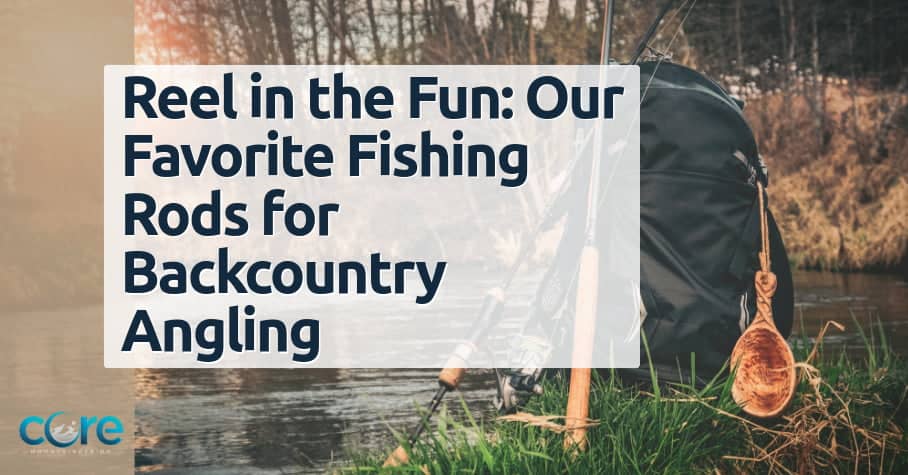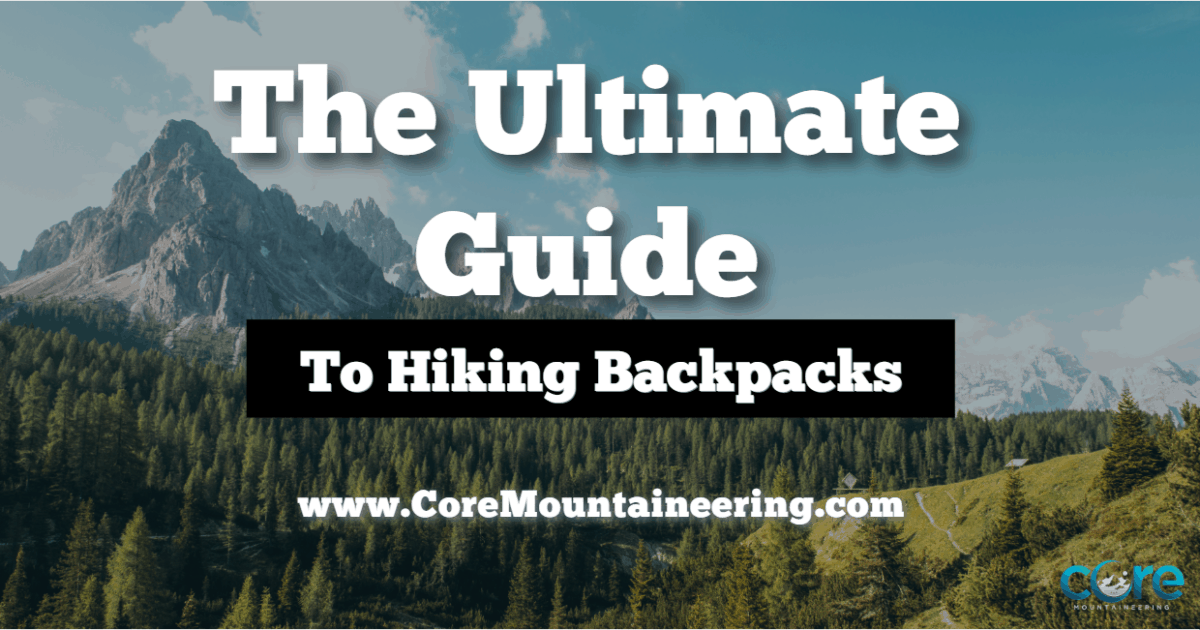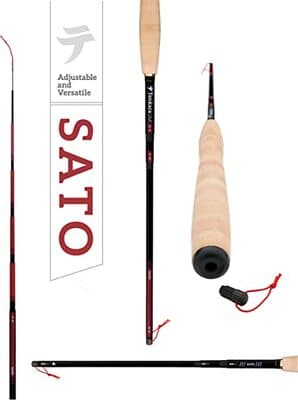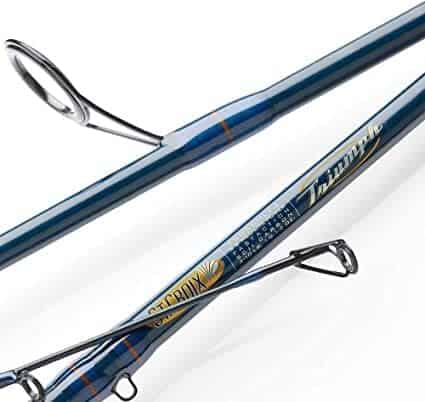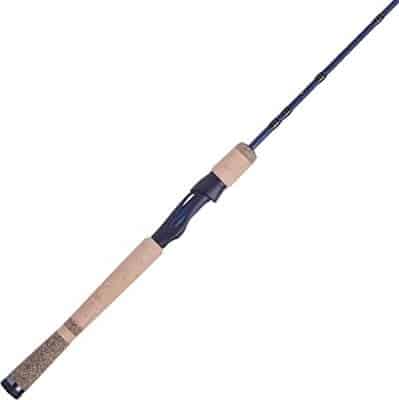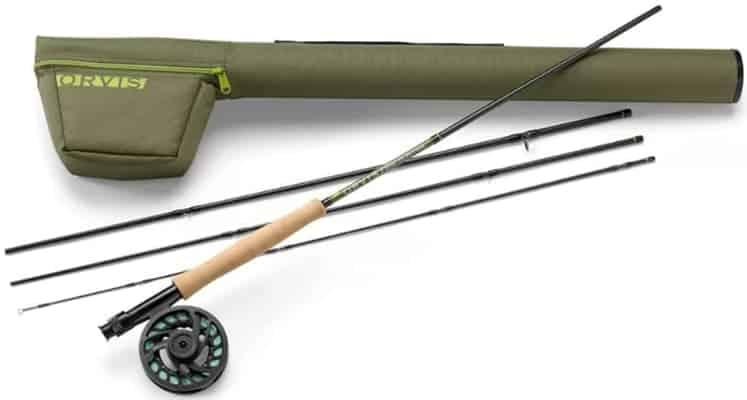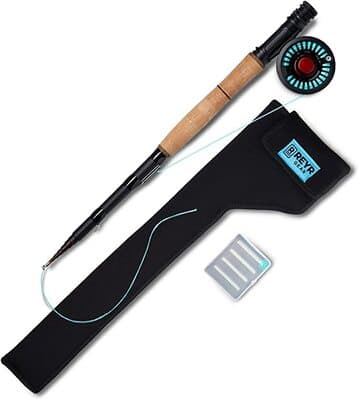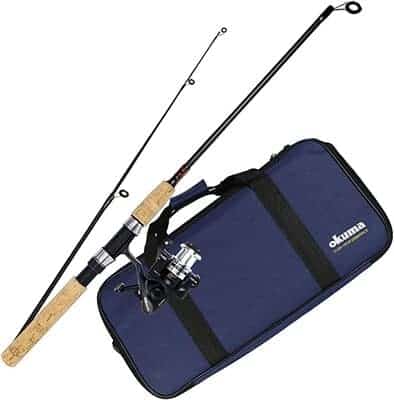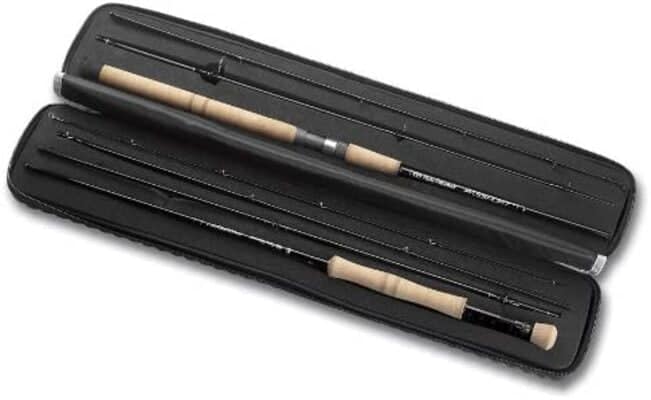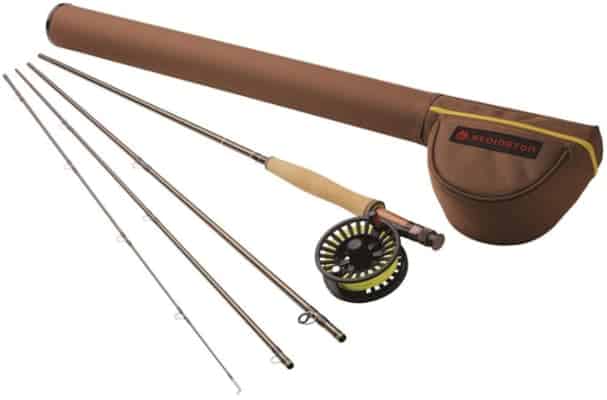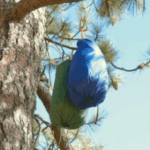Fishing is a popular outdoor activity that is enjoyed by many. However, for those who love to backpack, carrying a bulky fishing rod can be cumbersome. Fortunately, there are many lightweight and compact fishing rods that are perfect for backpacking.
In this article, we will explore what to look for in a backpacking fishing rod and review the top ten fishing rods for backpacking.
Fishing Rods: What to Look For
When choosing a backpacking fishing rod, there are several factors to consider. These include:
- Length – A shorter rod is more compact and easier to carry, but a longer rod will allow for greater casting distance and better control.
- Power – This refers to the amount of force needed to bend the rod. A light power rod is good for smaller fish, while a heavier power rod is necessary for larger fish.
- Action – This refers to how much the rod bends when pressure is applied. A fast action rod bends less and is good for casting distance, while a slow action rod bends more and is better for casting accuracy.
- Material – The most common materials used for backpacking fishing rods are graphite and fiberglass. Graphite is lighter and more sensitive, while fiberglass is more durable.
- Weight – A lighter rod is easier to carry, but a heavier rod may provide better balance and control.
If you’re looking for a hiking backpack, make sure to check out our backpacking guide here.
Top Ten Fishing Rods for Backpacking
From local ponds to remote streams and lakes, these rods are designed to be compact and durable, making them perfect for hiking, camping, or any outdoor adventure.
In this list, we have compiled the top 10 best fishing rods for backpacking, each offering unique features and benefits to suit a variety of needs and preferences. Whether you’re a seasoned angler or a beginner, these rods are sure to provide you with a great fishing experience on your next outdoor excursion.
Tenkara USA Sato
The Tenkara USA Sato is a great option for those who want a lightweight and compact fishing rod.
- Weight: 2.9 oz
- Length: 10.8ft/11.10ft/12.9ft
- Includes Case
Pro: This carbon fiber lightweight rod is one of the most popular among anglers. It allows 3 lengths (10.8ft/11.10ft/12.9ft.) to choose from depending on your needs. Further, it’s durable enough to handle large fish well, and small fish still feel great, and it is at home in small and larger streams. It collapses down to 22 inches and comes with a space for the plug in the bottom of the handle.
Con: While a bit pricey, you get what you pay for and the Sato is a great rod. Tenkara offers a few other rods, all of which are worthy of checking out, but the Sato is a “one-and-done” rod that suits all of your backpack fishing needs.
Take a look at their current pricing and full range of offerings by clicking here.
St. Croix Triumph Travel Spinning Rod
Whether you’re fishing on a lake, wading through rivers, or casting from the shore, St. Croix offers responsive performance that guarantees success below the surface.
- Weight: 16 oz.
- Length: 78 in. (6.5 ft)
- Includes Case
Pro: This rod is made from a carbon resin material. At 6.5 ft long, it has medium power and fast action, making it suitable for a variety of fish. It comes with a carrying case and is reasonably priced.
Con: Not the lightest rod on our list, but still an acceptable weight for backpacking.
Check out the current price here.
Fenwick Eagle Travel Spinning Rod
This rod is made from graphite and is about 6 feet long. It has a medium power and a fast action, making it suitable for a variety of fish. It comes with a carrying case and is reasonably priced.
- Weight: 4.8 oz
- Length: 72 in. (6 ft)
- Includes Case
- 5 Year Warranty
Pro: Fenwick has a reputation among anglers as a quality manufacturer. The Eagle Travel Spinning Rod is just that…It breaks down into 3 parts, making it easy to pack away into the included carrying case. Strikes a balance between quality and price-making.
Con: One potential drawback of the Fenwick Eagle Travel Spinning Fishing Rod, is that it may not be as durable as some other backpacking fishing rods on the market. Additionally, some users have reported that the rod can be a bit stiff, which may affect its sensitivity and feel.
See if this fishing rod is still available here.
Orvis Encounter Fly Rod
The Orvis Encounter Fly Rod is the perfect gift for the avid angler or beginner alike. This kit has everything one needs to seek out new “honey holes” in remote areas.
- Weight: 4.2 oz
- Length: 9ft
- Includes Case
Pro: The Orvis Encounter rod is constructed using graphite material, and features a medium action that allows for casting of both small and large flies. Even during the winter when trout are less active, I was able to sense the delicate bites and successfully reel in a sizable fish.
Con: The Encounter is designed to be adaptable, which implies that it may not excel in any specific area, but it performs satisfactorily in almost all scenarios. Normally, Orvis offers a warranty for their rods, but the Encounter does not come with one. Nonetheless, if any parts of the Encounter are damaged, they can be replaced.
Discover the full range of features and pricing options available here.
REYR Gear – First CAST Fly Rod
For something a little different, the REYR Gear telescopic rod fits the bill. This ultra compactable rod makes for easy setup and quick casts without much hassle.
- Weight: 8.9 oz
- Length: 9ft
- Includes Case
Pro: The REYR Gear rod is constructed of a blend between aluminum and graphite material. It boasts a medium to fast action and comes in multiple setups for various hand orientations and weights. But the real pro here is its arguably the most packable rod on our list, along with being quick and easy to set up or put away.
Con: The included case might leave you wanting something more. Some users report it’s not as sensitive due to the unique design, but should be sufficient for backpacking and quick casts.
You can check the current price here.
KastKing Compass
Perhaps one of the better-known telescopic travel rods comes from KastKing. The Kastking Compass telescopic travel rod is ultra-compact and allows for a quick and hassle-free setup, making it an ideal option for on-the-go casting.
- Weight: 8.9 oz
- Length: 9ft
- Includes Case
Pro: On the plus side, the KastKing Compass rod packs down to 17 inches and comes in multiple formats. Available as either a spinning or casting model to suit your needs, it is crafted of a sensitive graphite composite.
Con: One downside to consider is that the guides on the rod seem to be of less quality than the rod itself. The rod is sturdy and strong, with the guides seemingly being an afterthought.
Check for availably and the current price here.
EOW XPEDITE Portable Telescopic Spinning Fishing Rods
When venturing into the backcountry, I usually leave my pricier rods at home. However, the EOW Xpedite strikes a perfect balance of affordability and durability, making it an ideal option without being overly concerned about potential damage.
- Weight: 7.6 oz
- Length: 6 – 7 ft.
- Includes Case
Pros: The obvious advantage of the EOW Expedite is its portability. This telescoping travel rod can easily fit in a backpack or carry-on luggage, making it a great option for anglers on the go. It is also very lightweight, weighing in at only 7.6 ounces, which can reduce fatigue during a long day of casting.
The rod is made from high-quality materials and features a medium-fast action, allowing for excellent sensitivity and accuracy. It also comes with a protective case for added convenience and protection during transport.
Cons: One potential drawback of the EOW Expedite is its limited power. This rod is designed to handle smaller fish and lighter lures, which may not be suitable for all types of fishing. Further, while the rod’s sensitivity is a pro, it can be overly sensitive for some users, making it challenging to control the lure and detect subtle bites.
Check out the current price here.
Okuma Voyager Spinning Freshwater Travel Kit
This all-inclusive travel package for your upcoming fishing trip provides useful fishing supplies, including a personalized case and a tackle box for fishing lures. The rod included in the package has a smooth, light action and comfortable cork grips, making it perfect for catching trout, bass, walleye, and other species. While there may be better fishing rods available on the market today, this portable fishing rod is easily the best value for the money.
- Weight: Not Sure
- Length: 6 ft.
- Includes Case
Pros: This package offers great value for the money as it includes a rod and reel set, a foam bag with padding and carry handles, a ball-bearing driving system, and a spinning reel. The rod is also equipped with ceramic inserts for guides.
Cons: Not suitable for catching large fish.
Discover the full range of features and pricing options available here.
Flying Fisherman Passport Travel Fishing Rod
The Flying Fisherman Passport Fly and Spinning Rod Set with Case is a packable set of three rod sets that combine a fly rod and spinning rod for fishing in any conditions. Each set comes in a durable protective case that can hold multiple rods.
The rods are designed with a blank taper for improved sensitivity, strength, and performance and are made with high-quality Japanese graphite and Nanotechnology resins. They also feature FUJI guides, Portuguese cork grips, and carbon fiber reinforcements for added durability.
- Weight: Unknown
- Length: 7 – 9 ft.
- Includes Case
Pro: The PASSPORT fishing rods are built with the best materials and go through stringent guidelines to ensure quality and performance. The set is perfect for the traveling angler or someone who has everything. The packable design makes it easy to transport in standard luggage, and the Passport Replacement Program ensures peace of mind for the angler.
Con: it may be more expensive than other rod sets on the market.
You can check out the current price here.
Redington Path II Fly Rod Combo Kit
If you’re in need of a reliable fly fishing combo for any fishery, consider the REDINGTON FLY FISHING COMBOS. Each combo is carefully curated to meet your angling needs and is suitable for both fresh and saltwater fishing.
- Weight: 2 lbs
- Length: 9 ft.
- Includes Case
The kit includes a PATH II rod, Crosswater reel pre-spooled with RIO mainstream WF fly line, and Cordura rod tube case, making it the perfect combo for anglers on the go.
Pro: With a medium-fast action PATH rod and thought-out details, such as a wood reel seat and full-wells grip, anglers of all levels can enjoy the classic performance. The kit also comes with a Cordura rod tube case, making it easy to transport.
Con: While the REDINGTON FLY FISHING COMBOS are a great value for their quality, they may be more expensive than other entry-level combos on the market.
Check the current price and availability here.
How Do I Choose The Right Size Backpacking Fishing Rod?
When choosing the right size backpacking fishing rod, it is important to consider the type of fish you will be targeting, as well as the size and weight of the gear you will be carrying.
A shorter rod, such as a 6 to 7-foot model, is easier to carry and is suitable for smaller fish, while a longer rod, such as an 8 to 9-foot model, will allow for greater casting distance and is better for larger fish.
It is also important to consider the rod’s power and action, as these will affect the rod’s sensitivity and casting ability. Ultimately, the right size backpacking fishing rod will depend on your specific needs and preferences, so it is important to do your research and choose a rod that is appropriate for the type of fishing you plan to do while backpacking.
Can I Use A Regular Fishing Rod For Backpacking?
While it is possible to use a regular fishing rod for backpacking, it is generally not recommended. Regular fishing rods tend to be heavier and bulkier than backpacking fishing rods, which can make them difficult to carry and transport.
Additionally, regular fishing rods may not be as durable or suitable for the rigors of backpacking, as they are not designed to withstand the wear and tear of being packed and unpacked on a regular basis.
Backpacking fishing rods are specifically designed to be lightweight, compact, and durable, making them the better choice for those who plan to do fishing while backpacking.
What is the Best Material for a Backpacking Fishing Rod?
Selecting the ideal material for a backpacking fishing rod involves considering a multitude of variables. Your distinctive requirements and inclinations, along with the fish species you intend to reel in and the fishing conditions you’ll be facing, all come into play. Based on these criteria, certain materials may be more appropriate than others, presenting you with a range of options to choose from.
Graphite is a popular choice for backpacking fishing rods because it is lightweight, strong, and sensitive, making it ideal for casting and detecting bites.
Fiberglass is another option, as it is durable and more affordable than graphite, but it may not be as sensitive or as lightweight.
Carbon fiber is another material that is becoming increasingly popular for backpacking fishing rods, as it is both lightweight and strong.
Ultimately, the best material for a backpacking fishing rod is one that balances your desired weight, sensitivity, strength, and price point.
Are Telescopic Rods Good For Backpacking?
One of my first fishing rods was a telescopic rod. They can be a good option for backpacking because they are lightweight and compact, making them easy to pack and transport. Telescopic rods offer versatility in terms of length, as they can be extended or retracted depending on your needs.
However, it is important to note that telescopic rods may not be as durable as other types of rods, as their joints can be more prone to breaking or weakening over time.
Additionally, telescopic rods may not offer the same level of sensitivity as one-piece rods, which can make it more difficult to detect bites. When I’m heading out for remote backpacking trips with a little fishing on the side, I usually pack my telescopic rod. It’s perfect for quick casts into those pristine rivers or lakes that we stumble upon during long hikes.
Do understand that some telescopic rods can be more trouble than they’re worth. The advantage is in their ease of use and quick setup…but from my experience, they can sometimes be a bit finicky.
How Do I Pack A Fishing Rod For Backpacking?
Packing a fishing rod for backpacking can be a bit of a challenge, but with the right approach, it can be done relatively easily. Here are the steps you can follow to pack a fishing rod for backpacking:
- Disassemble the rod: Start by breaking down the rod into its individual pieces, taking care to keep the pieces in order.
- Secure the pieces: Use rubber bands or hook and loop straps to secure the pieces of the rod together, making sure they are snug but not too tight.
- Protect the guides: Place a piece of foam or a soft cloth over the guides of the rod to protect them from damage during transport.
- Pack the rod: Pack the rod into a protective case or tube that is designed specifically for fishing rods. If you don’t have a protective case, you can wrap the rod in a towel or clothing to help protect it.
- Secure the case: Make sure the case is securely fastened and won’t come loose during transport.
- Pack the case: Pack the rod case into your backpack or use the pack’s exterior loops to latch it on the side…making sure it is secured and won’t shift around during your hike.
By following these steps, you can safely pack your fishing rod for backpacking, ensuring that it arrives at your destination in good condition and is ready to use when you are.
What Other Fishing Gear Do I Need For Backpacking?
Now that we’ve hooked you up with the top fishing rods for backpacking, let’s set a line for other gear you might need. Although some of these suggestions are obvious, it never hurts to be reminded. They might even save you from a “bad day” of fishing if there is such a thing.
When it comes to backpacking and fishing, there are a few key pieces of gear that you will need in addition to your fishing rod. Here are some of the essential items:
- Fishing reel: You’ll need a fishing reel to attach to your fishing rod to spool and retrieve the fishing line.
- Fishing line: This is what you’ll be using to actually catch fish. Make sure to choose a line that is appropriate for the type of fish you’ll be targeting.
- Lures and bait: You’ll need some type of bait or lure to attract fish. Depending on your preferences and the type of fish you’re after, you may want to bring a variety of different lures and bait.
- Tackle box: You’ll need a place to store your lures, bait, hooks, and other small fishing accessories. A small, compact tackle box is ideal for backpacking.
- Fishing license: Make sure to check the local fishing regulations and obtain any necessary fishing licenses before you head out.
- Polarized sunglasses: These will not only protect your eyes from the sun but also allow you to see into the water, making it easier to spot fish.
- Sunscreen and bug spray: Don’t forget to protect your skin from the sun and bugs!
- Fishing net: A lightweight, collapsible net is useful for safely landing and releasing fish.
- Multi-tool: A good multi-tool can come in handy for a variety of tasks, from cutting fishing line to opening cans of food.
- Water filter: If you’ll be backpacking in a remote area, a water filter can be a lifesaver, ensuring that you always have access to clean drinking water.
Reel It In And Pack It Up…
Backpacking and fishing make for a great combination, offering the opportunity to explore remote and beautiful areas while enjoying the thrill of catching fish. When it comes to backpacking fishing, choosing the right gear is crucial, and your fishing rod is no exception.
Factors such as length, weight, and material all play a role in determining the right backpacking fishing rod for you. By considering these factors, as well as the type of fish you’ll be targeting, you can find a fishing rod that is both lightweight and strong, and that offers the sensitivity and versatility you need for successful fishing in the backcountry.
With the right gear and a bit of planning, backpacking fishing can be a rewarding and unforgettable experience that you’ll want to repeat time and time again.
Please check out our article, Rugged and Reliable: The Best Camping Cookware Sets for Any Trip.

